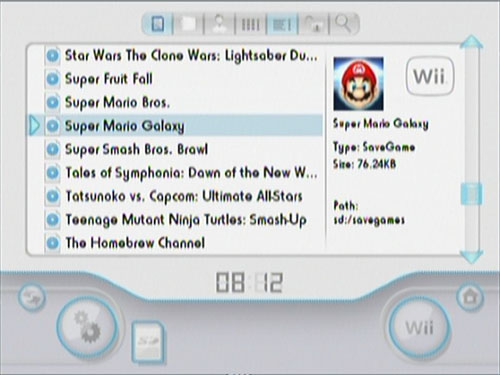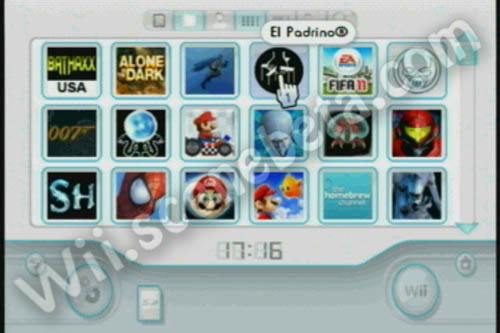

- Savegame manager gx extracting or compress manual#
- Savegame manager gx extracting or compress archive#
- Savegame manager gx extracting or compress upgrade#
- Savegame manager gx extracting or compress full#
- Savegame manager gx extracting or compress software#
That being said, there were still quite a few fifth-gen games that used Audio-CD data for their soundtracks, such as Vib-Ribbon and the Wipeout trilogy on the PS1, and Battle Garegga and Daytona USA on the Saturn. the PS1 & the Saturn, it was more common than not to just use the Audio-CD part for messages like "Don't put this in a CD player!" and little else. By the launch of the fifth generation CD-based consoles, i.e.
Savegame manager gx extracting or compress full#
BIN/ISO is the full disc data, including Audio-CD sound data and game data.

Savegame manager gx extracting or compress software#
ISO files, data-dumping software will usually do one of two things as a workaround:
Savegame manager gx extracting or compress archive#
To put it in perspective, a 700 MB CD containing nothing but Audio-CD data can hold at most around 80 minutes worth of sound data, meaning games that used a lot of sounds were limited in size.īecause these mixed CDs are difficult to properly archive just by using standard. what do these systems all have in common? They all use a regular CD format! Game developers often stored music and other sounds using the Audio-CD format, but it was terribly inefficient when it comes to disc storage as it also had to store the actual game along with the sound files (commonly known as a "mixed CD"), and these sound files are never compressed because the Audio-CD standard simply doesn't allow for sound compression. PCs, Sega-CD, PC-Engine, PlayStation, Sega Saturn.
Savegame manager gx extracting or compress manual#
Savegame manager gx extracting or compress upgrade#
For example, the WBFS format, used for shrinking Wii discs, is not archive-quality since it may be missing padding content and upgrade partitions (which have their uses in 3DS/Wii modding) compared to an intact, uncompressed dump. Compressions that can't be reversed, or those that can be but will have missing or altered content whether it interferes with functionality (rebuilt table of content) or not, are not archive-quality. It's important to take all this into consideration before attempting as most of these are console-specific.Īrchive-quality dumps are ones that when converted back to its original state, will have the same checksum as the official uncompressed release. Some conversions are only playable on specific emulators and may not work on real hardware depending on the console and the method used. There are many ways, some methods alter the data forever while others can be converted back and forth with generally no loss. Most of the information here is based partially on this guide.

Naturally, one would want to trim this extra "fat" as much as possible, which is what this page aims to help to achieve. It wouldn't be so bad if not for the fact that the game data itself is often times only a fraction of the actual disc size - for instance, the Super Mario 25th Anniversary Wii disc itself is a 4.7GB, when really the actual game data is only a single SNES ROM (12 MB of useful data, to be precise) and nothing else. However, with disc sizes ranging from 700 MB (CD), 1.4 GB (GC Mini-DVD), 4.7 GB (single-layered DVD), and 25 GB (Blu-Ray), they can get pretty taxing for storage, especially when newer generations of consoles games are getting bigger in file sizes. Disc images (commonly known as ISOs, but ISO is actually a specific format) are faithful software recreations of game discs (when made correctly).


 0 kommentar(er)
0 kommentar(er)
